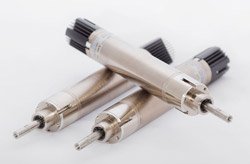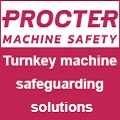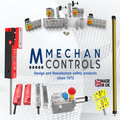
Posted to News on 8th Jan 2019, 11:42
What is a moving coil actuator?
In this, the first of several technical notes on moving coil actuators, Ed Neff, President of SMAC Moving Coil Actuators (MCA), provides a brief history of linear actuators and explains where moving coil actuators fit in.

Hydraulic actuators came first. These devices produce high forces and can because hydraulic fluids are not compressible. That means hydraulic actuators can operate as servo actuators, which is useful in applications that need variable speed and positioning. Primary uses are in the machine tool industry, plastic processing, and off-highway equipment. Speed is not high. Cost for hydraulic actuation is relatively high due to the need for power units and pumps. Typical life is about 10M cycles. Leakage of fluid is a major concern.
Pneumatic actuators (and valves) emerged after World War II. These devices produce low to medium forces and are relatively fast. However, pneumatic actuators are not typically useful as servo devices because of how their working fluid (air) is compressible, therefore difficult to employ for positioning. That means pneumatic cylinders essentially deliver two-position motion, and adjustments must be made manually. Typical life is about 10M cycles. Pneumatic actuators on their own are inexpensive; however, they do require the purchase of a compressor.
Electric actuators also emerged after World War II. The first of these devices (and many today) employ rotary motion from an electric motor that is converted to linear motion through some mechanism - often ball screws. Rotary motors are either open-loop steppers or closed-loop servo motors, with speed and position programmable on the latter. High speed is possible with wide screw pitch, although such geometry compromises speed and positioning precision. Cycle life is comparable to that of pneumatic cylinders. Electric actuators first replaced hydraulic actuators as mentioned above, but are now facing direct competition from linear motors because of the speed-precision tradeoff and cycle life. These devices cost about three times what pneumatic cylinders cost.
In the late 1980s, the first linear motor-based actuators began to appear. This was as a result of the development of high-strength magnets; first samarium cobalt and then neodymium. These DC devices include coils to move the portion of the assembly with magnets.
Linear-motor actuators are servo devices with programmable position and speed capabilities. They can have a much longer life (to 100M cycles) than air cylinders or ball screw actuators. To get relatively high speeds, the actuators need current to 5A+ range, this being needed because of the mass of the moving magnet. Force level is comparable to pneumatic devices. The price is about eight times that of pneumatic devices.
The moving-coil actuator

Electric actuators have slowly replaced hydraulic actuators in about 70 per cent of applications, mostly for reasons related to cost, cycle life, and performance.

That leads us to moving-coil actuators, which satisfy all these design objectives for new packaging-machine builds. Our next technical note will detail how a moving coil works and how fast it can go. Then we'll explain how actuator life is moving towards one billion cycles and why costs continue to drop.
Learn more at www.smac-mca.co.uk.
The second Technical Note in the series from SMAC can be read here: Innovations in moving-coil actuator technology.
Want the latest machine building news straight to your inbox? Become a MachineBuilding member for free today >>

















